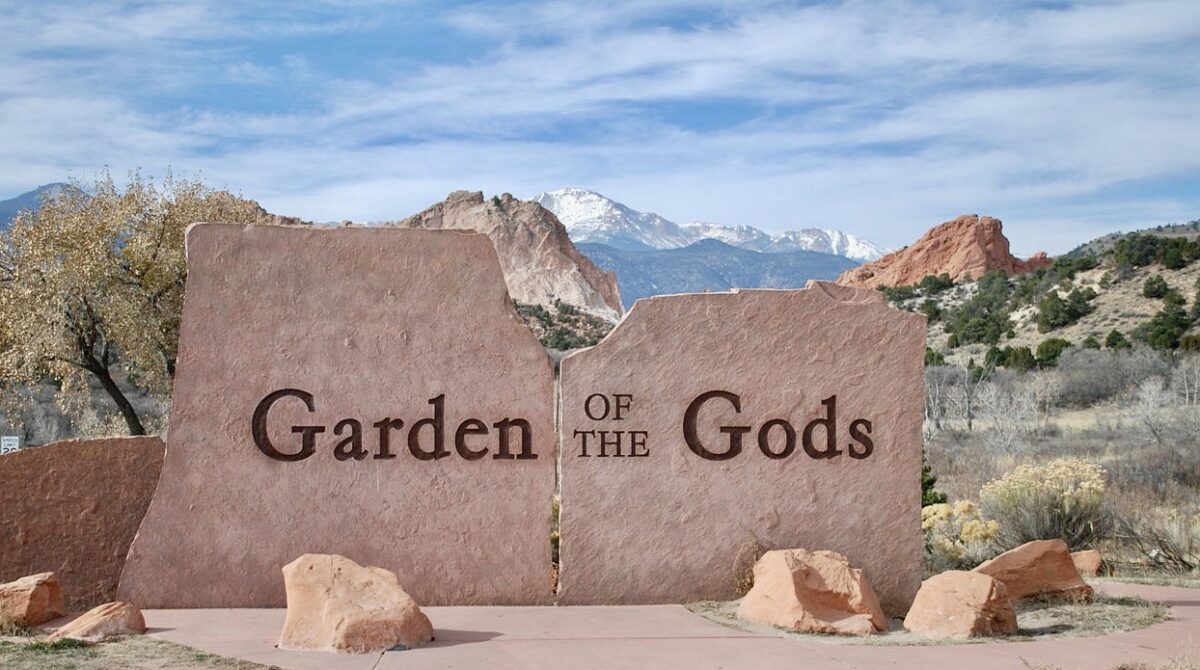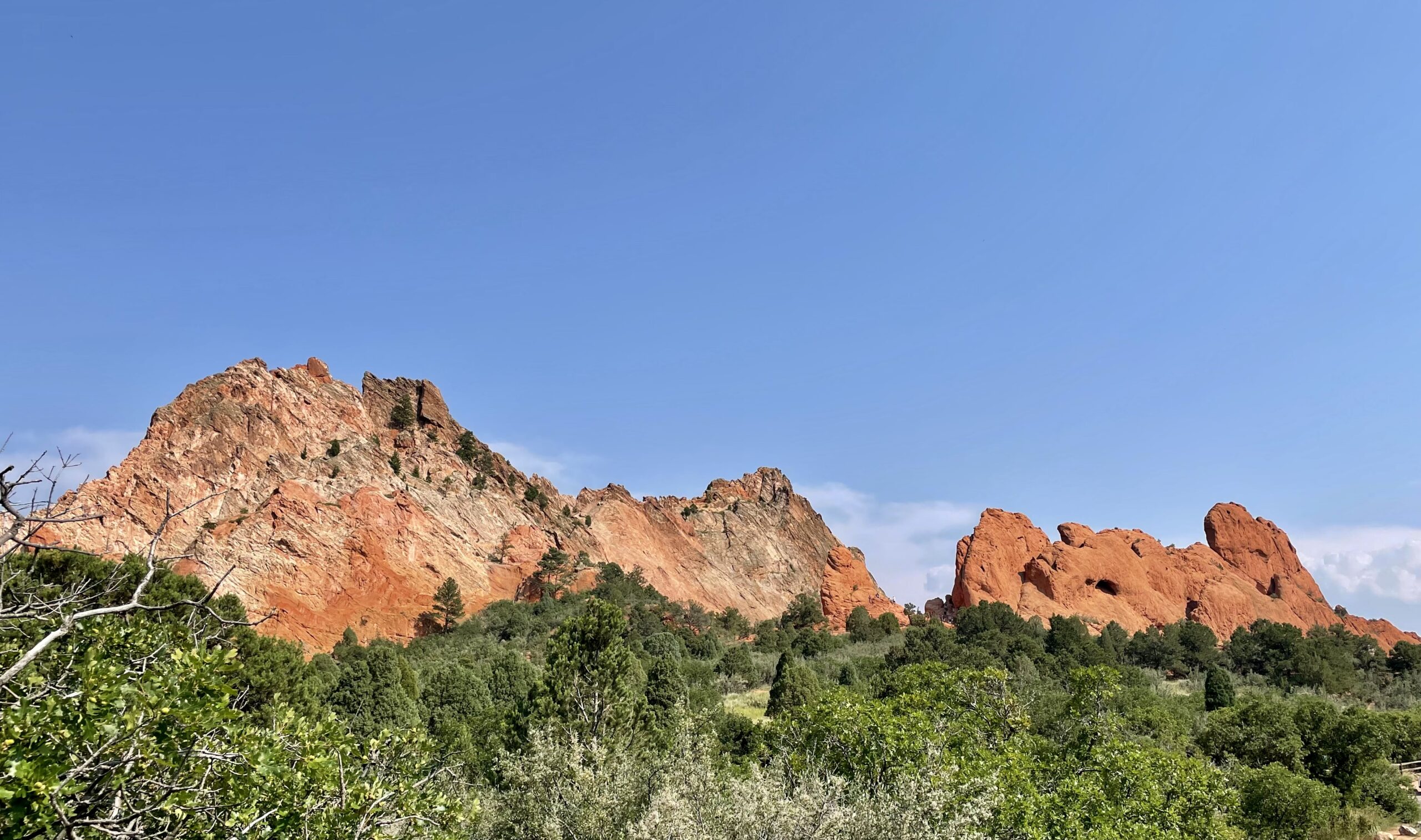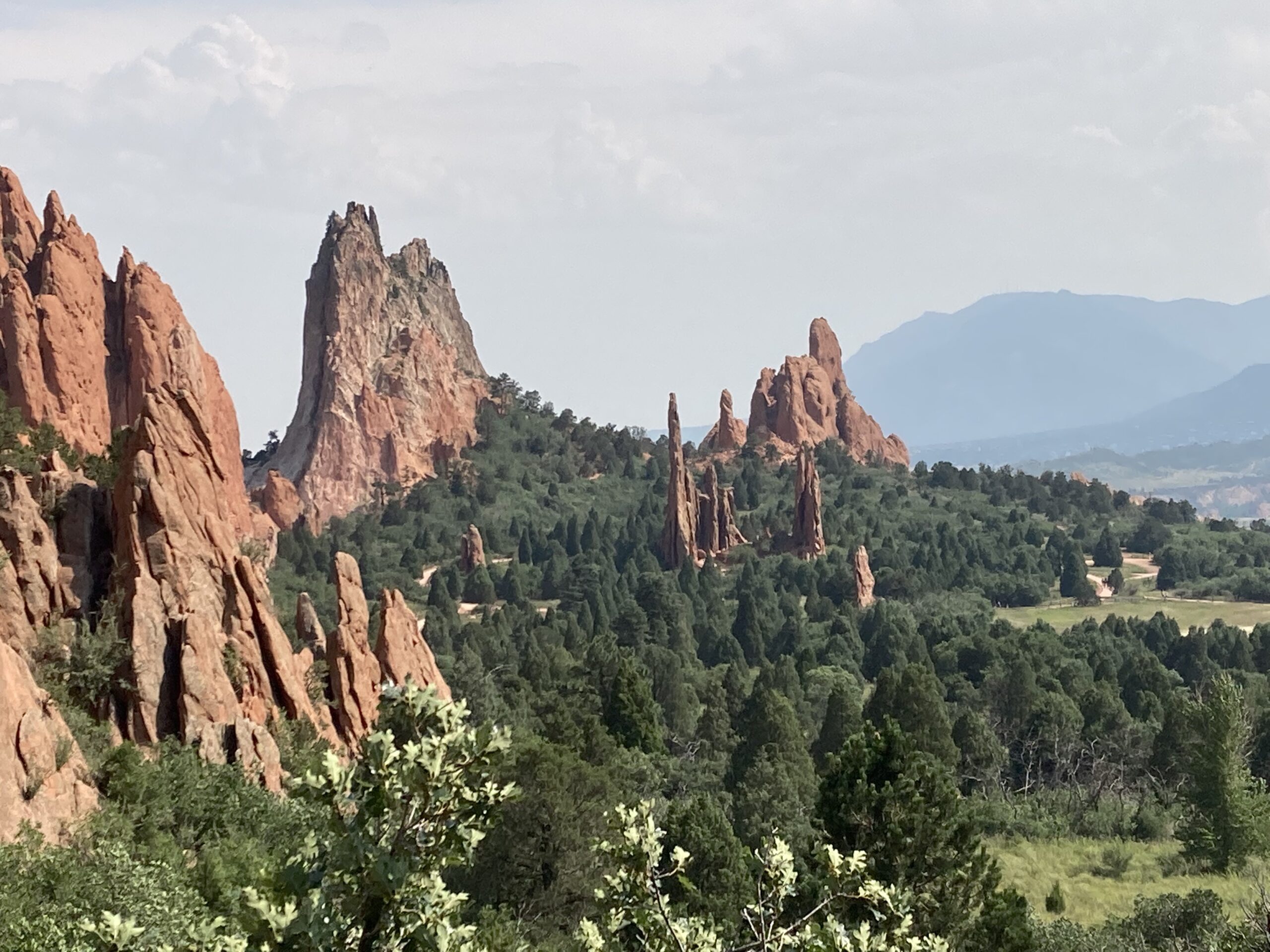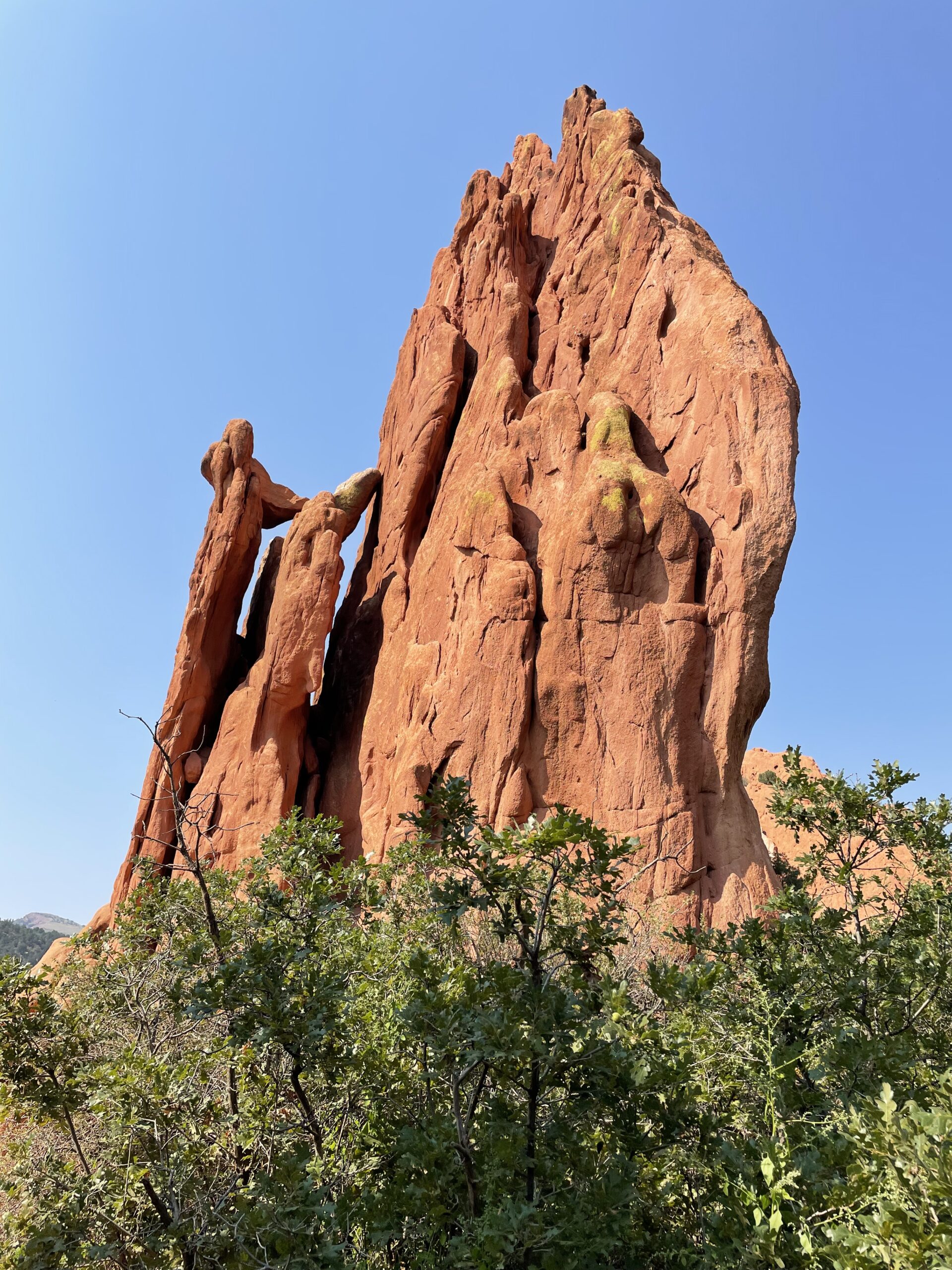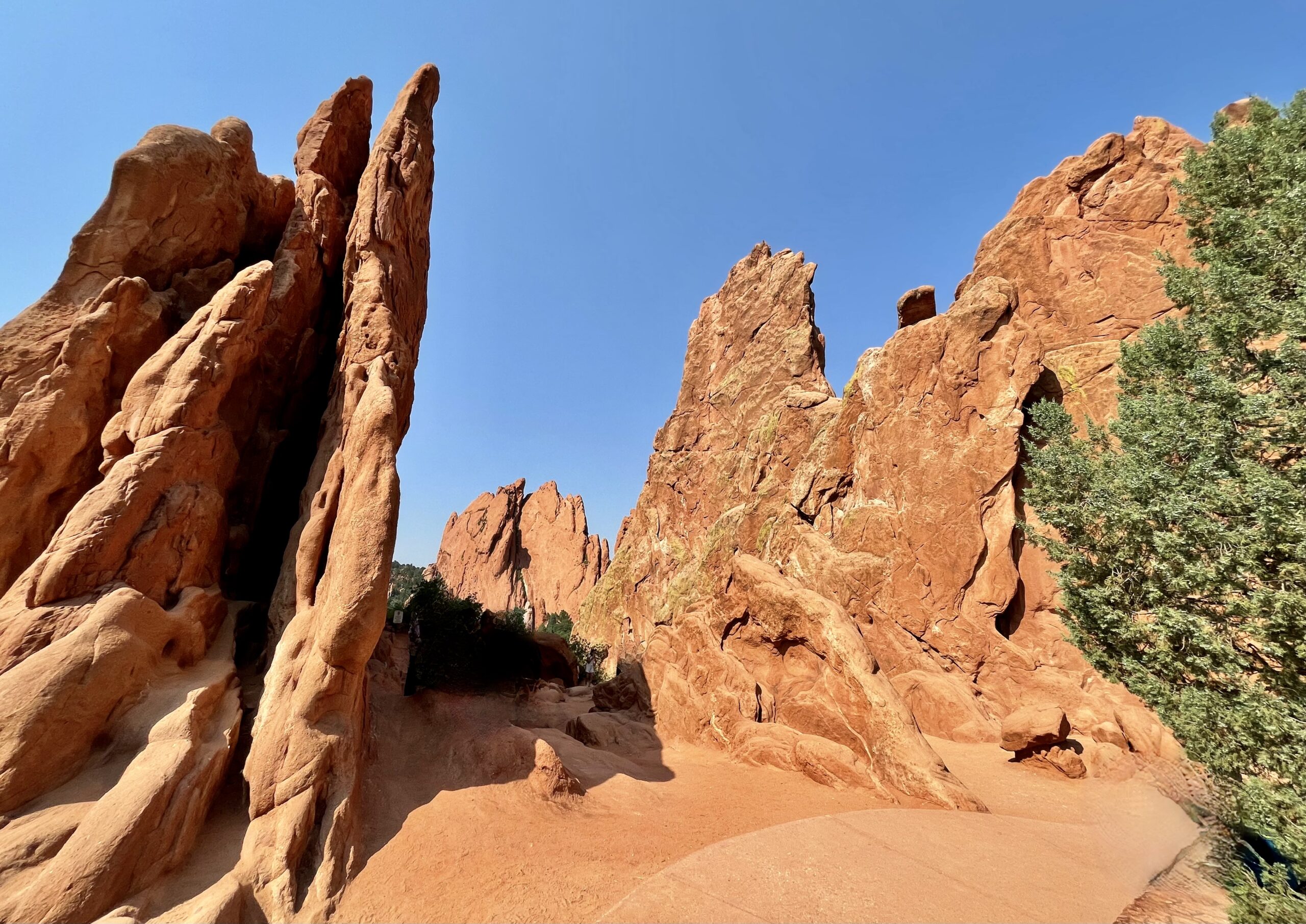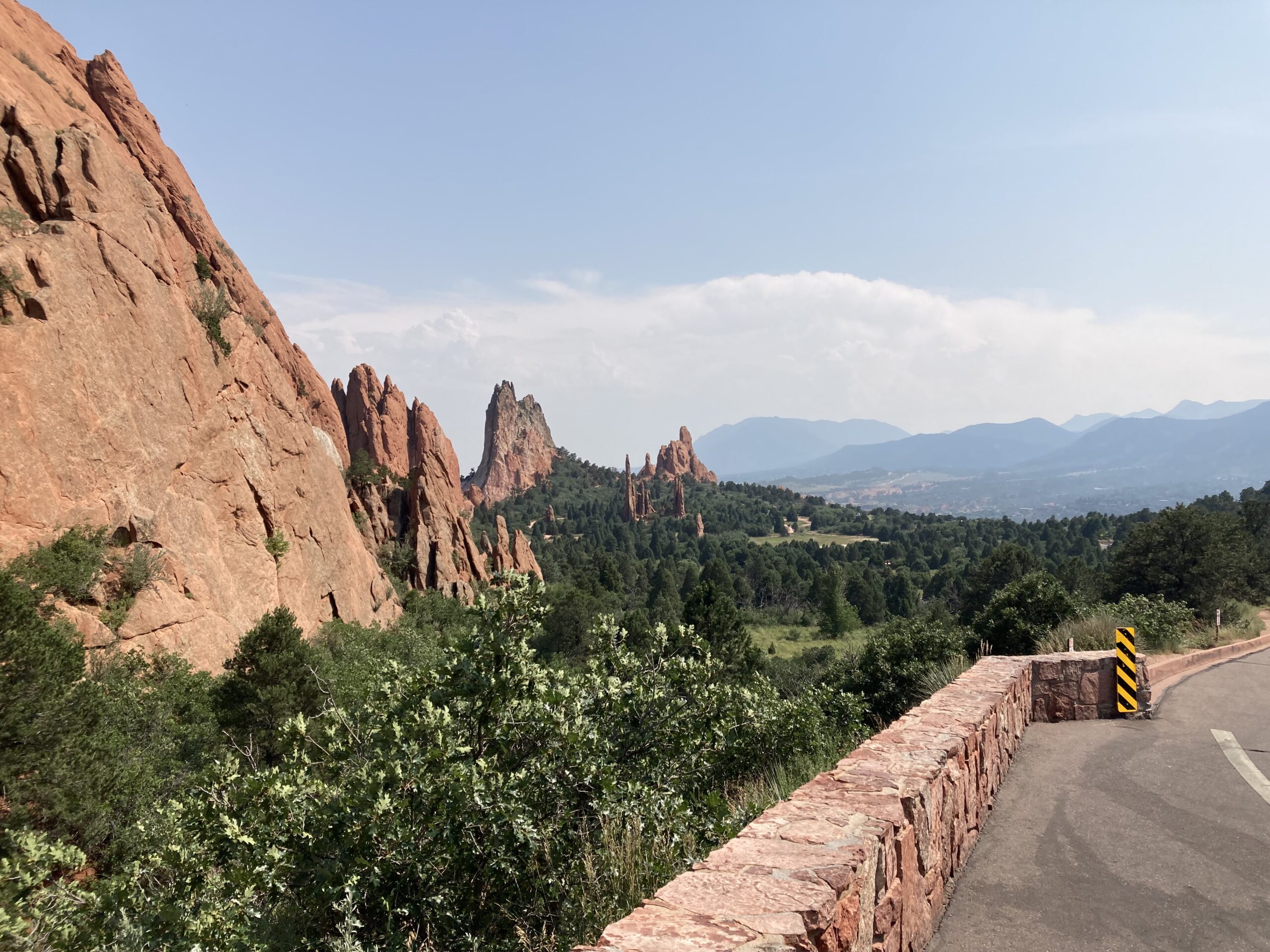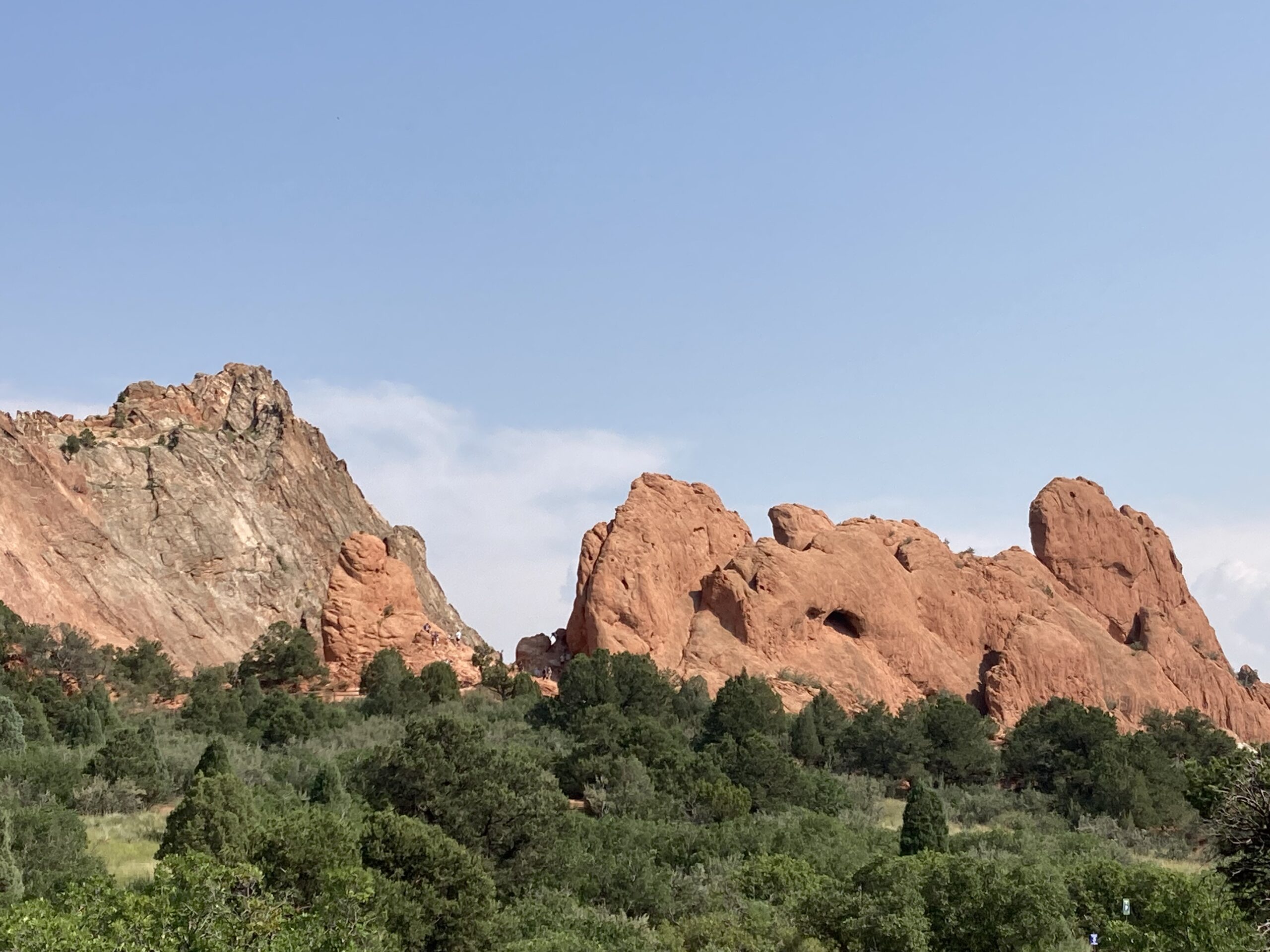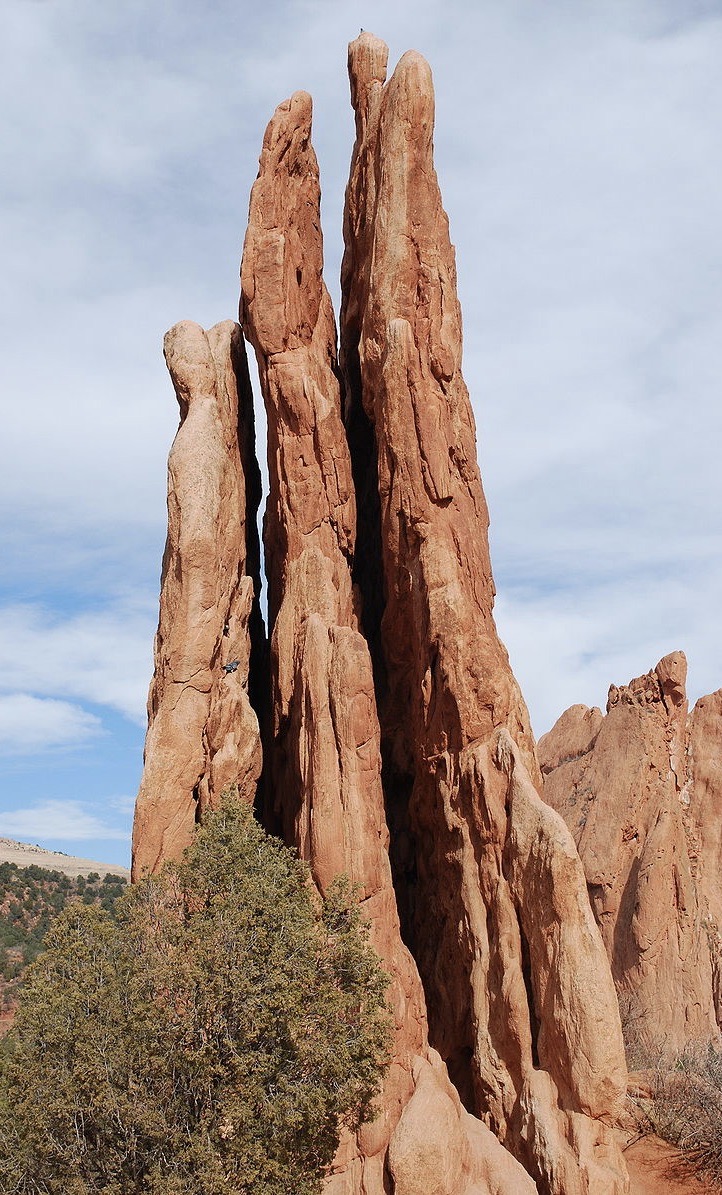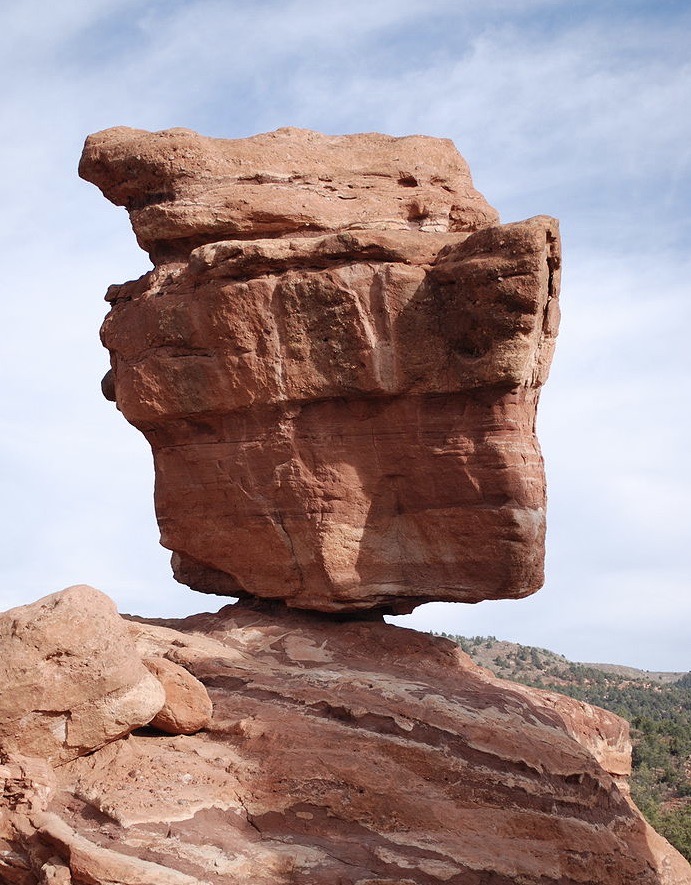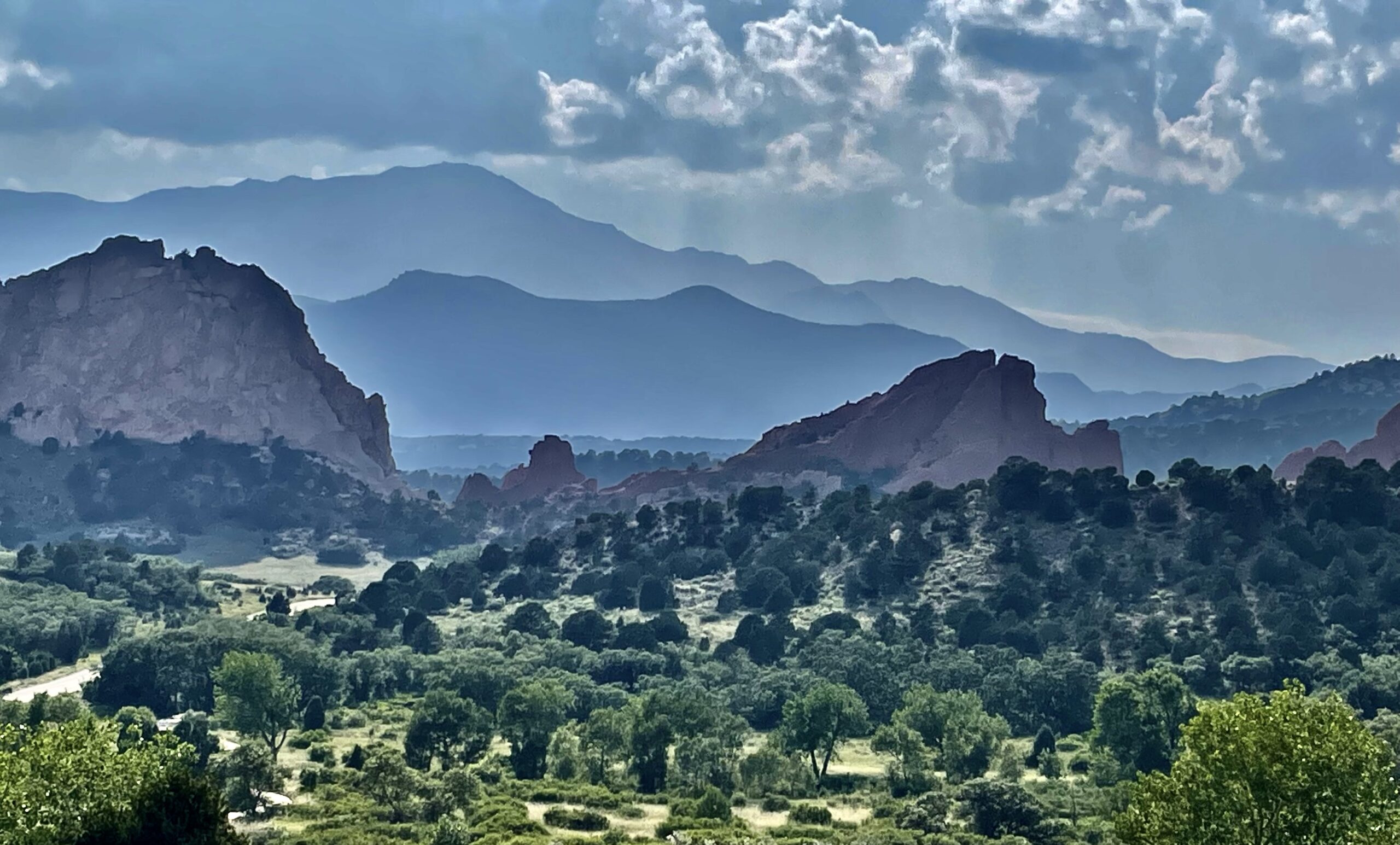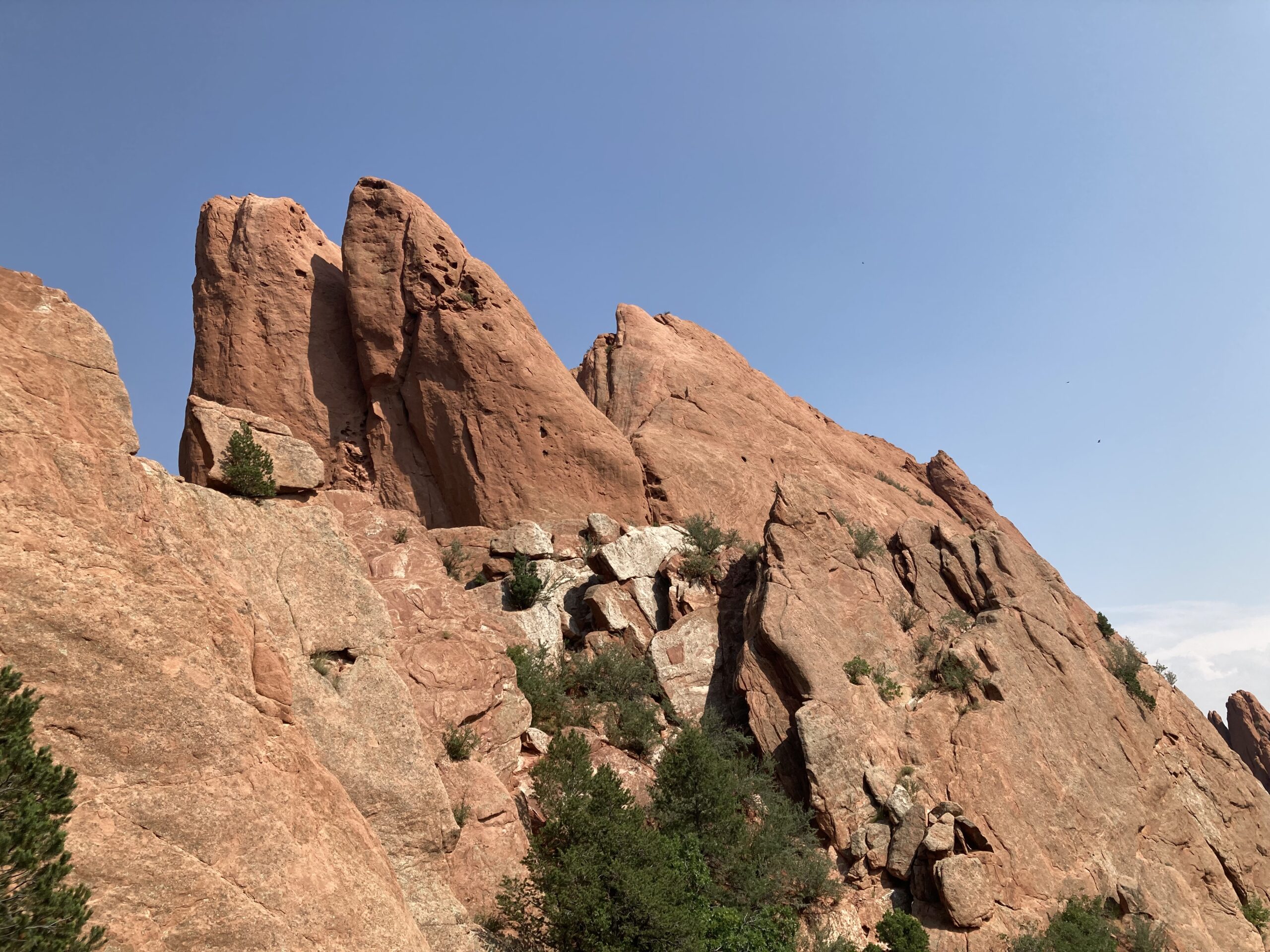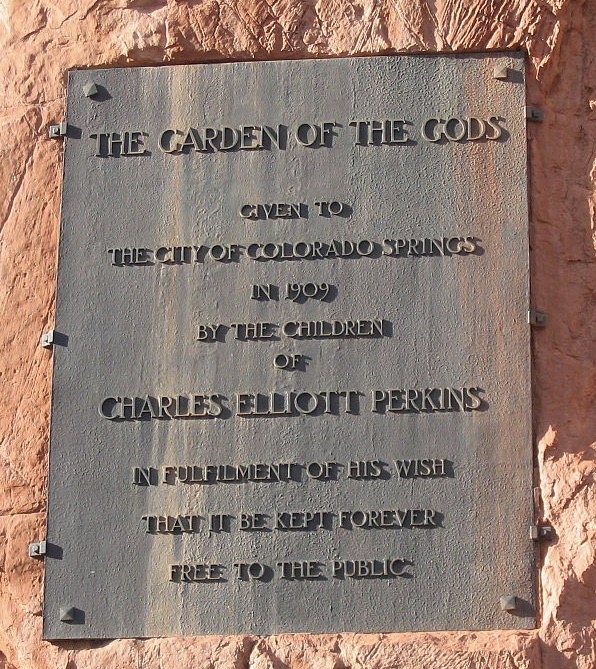Collector's Corner
GARDEN OF THE GODS: A Cultural Crossroads
Since the early 1970s, every time I have visited my Colorado family I somehow find myself returning to the Garden of the Gods. Something continues to draw me back. Of course, the most obvious reason is the spectacular red, pink, and white sandstone outcroppings, many resembling giant fins, but beyond that the landscape has an aura of mystery and one has the feeling that there is so much more to be understood beyond the visual beauty.
Garden of the Gods entrance sign.
Garden of the Gods consists of 1,300 acres of sandstone outcroppings and offers visitors opportunities for hiking, rock climbing and, of course, photography. I wonder how many of the visitors – locals and tourists alike – know that the area they are enjoying is rich in history.
Hogbacks, Garden of the Gods. Photo by Jeff VanDyke.
The park’s name is generally credited to Rufus Cable. He was surveying the area with M. S. Beach who thought it would be perfect for a beer garden. Cable saw things differently and said, “Beer Garden! Why it is a fit place for the Gods to assemble. We will call it the Garden of the Gods.” The name stuck.
Cathedral Valley, Garden of the Gods. Photo by E. J. Guarino.
In 1871, General William Jackson Palmer founded Colorado Springs where the Garden of the Gods is located. Palmer encouraged Charles Elliot Perkins, the head of the Burlington Railroad, to acquire land in the Garden of the Gods and to build a railroad from Chicago to Colorado Springs. Although he did buy two-hundred and forty acres in what is now parkland and later added to it, Perkins never built a home on the land and his Burlington Railroad never reached Colorado Springs. Although Perkins left the land he had purchased as he had found it, intending it should be enjoyed by the public, he died before he could transfer the land to the City of Colorado Springs. Two years after their father’s death, his children donated the land to be used as a public park. This is the “modern” history of the park. However, the human history of the park goes back to ancient times, which is, perhaps, far more fascinating.
Cathedral Spires, Garden of the Gods. Photo by Jeff VanDyke.
The archaeological evidence indicates that the area that is now Garden of the Gods was used by paleo-Indians as early as 1330 BC. The Ute, who arrived in the area some 700 years ago, refer to these ancestors as the People of the Red Rocks.
Sandstone outcroppings, Garden of the Gods. Photo by Jeff VanDyke.
Because of the abundant wildlife, plants, and opportunities for shelter, there is ample evidence that many Native groups traveled through and camped in the area: The Apache, Arapaho, Cheyenne, Comanche, Kiowa, Lakota, Pawnee, and Shoshone. All of these tribes claim a connection to what is today the Garden of the Gods. The Ute people were the earliest known inhabitants of what is today the State of Colorado. These nomadic hunters spent winters in the Garden of the Gods, which had some religious significance but was not nearly as sacred to them as nearby Manitou Springs, which has numerous natural mineral springs believed to have healing properties. Pikes Peak was also sacred. At a height of 14,115 feet, it was the first peak to be illuminated at dawn and was called Tava, or Sun Mountain, by the Ute people. However, Garden of the Gods provided food and shelter during the harshest times of the year and the Ute frequented the area until the 1880s.
The road near Cathedral Valley, Garden of the Gods. Photo by E. J. Guarino.
For many generations, the Ute dominated the Central Rocky Mountains and the Front Range (the Southern Rocky Mountains), located in the central portion of Colorado and southeastern portion of Wyoming. Eastern Colorado, the area where Garden of the Gods is located, is at the western edge of the Great Plains. These vast grasslands provided habitat for massive herds of buffalo, more properly identified as American bison, which were a staple food source. These huge animals provided Native people with many forms of food, shelter, clothing, and weapons. No part of this enormous beast was wasted – the flesh, muscles, sinew, tendons, bones, hooves, tongue, skull, brain, horns, hair, hide, bladder, and stomach – were all utilized in some way. Dung was used for fuel and bones were cracked open to allow access to the nourishing marrow within, which provided fat for the Native diet. Archaeologists found evidence in Garden of the Gods of buffalo bones that had been broken open, which underscores the importance of marrow as a source of fat in the diet of the tribes who visited the area. For the tribes that lived on or near the Great Plains, the buffalo was their primary food source. For this reason, when the herds of American bison, numbering in the tens of millions, were intentionally brought to the brink of extinction in the 1800s, it had devastating consequences for the tribes whose lives depended upon them.
Rock formations, Garden of the Gods. Photo by E. J. Guarino.
In addition to the buffalo, the Great Plains also provided deer, elk, antelope and bighorn sheep as well as edible plants such as yarrow, bear root, arrow leaf, echinacea, balsam root (a type of sunflower), berries, and wild plum.
The Three Graces, Garden of the Gods.
There is ample archaeological evidence – arrowheads, tools, pottery shards, fire rings, and petroglyphs – that the Garden of the Gods attracted a diverse range of Native groups. Various bands moved back and forth across the area at different times of the year. The Utes utilized the region during the late fall and winter because the Plains tribes, who were their enemies, did not do so and because large elk herds, a rich resource, grazed on the nearby mesa at this time of year.
Balance Rock, Garden of the Gods.
In the 1600s, strangers, unlike any others, the Utes had seen before, entered their territory. Unknown to them, those they welcomed were not only a new people, but brought with them never-before-seen weapons, animals, and a new religion. These were the conquistadores who had ventured northward on an expedition from the lands they had conquered in Mexico. For the first time, the Utes saw men encased in metal armor, guns, swords, massive dogs, and the horse, which would change their way of life forever.
Panorama, Garden of the Gods. Photo by Jeff VanDyke.
The Garden of the Gods served as a crossroads for Native Americans up until the late nineteenth century. In the 1840s, white trappers arrived and two decades later, the first homesteaders came, attracted to the locale for the same reasons as Native people: abundant water, wildlife, edible plants, and temperate weather. At first, Native groups and the newly arrived settlers peacefully co-existed. However, over time, the situation changed because of a number of reasons: the destruction of the buffalo herds, which brought about famine; the introduction of alcohol; the emergence of new diseases to which Native people had no immunity; the arrival of more and more settlers inspired by the idea of Manifest Destiny; and, finally, the discovery of gold. “Pike’s Peak or Bust” became the rallying cry as over 100,000 people poured into the area seeking their fortune. These were the causes for what were termed “Indian uprisings,” one of the most famous of which was the Colorado Indian War.
Sandstone outcroppings, Garden of the Gods. Photo by E. J. Guarino.
The Colorado Indian War may, however, have been intentionally provoked for an ulterior motive. In March 1864, Colonel John Chivington claimed that 175 head of cattle had been stolen from settlers. There is no evidence that this was true, but there is speculation that Chivington may have provoked instability in Colorado to avoid being sent with his men to fight against the Confederacy. In November of the same year, Chivington and his troops entered what had become Cheyenne and Arapaho reservation land and sacked the winter encampment of the Cheyenne Chief Black Kettle, despite both the American flag and the white flag of peace being flown. Chivington’s 675 men burned teepees; massacred approximately 150 unarmed women, children, and elderly; mutilated many of the bodies, and took parts as souvenirs. There were no warriors in the village at the time of the slaughter. Known as the Sand Creek Massacre, this act of genocide was the first in what became a period of attacks and retaliations. The Northern and Southern Cheyenne, the Arapaho, and the Brulé Sioux united to fight against the U.S. Army and the settlers and drive them out of their ancestral territories. However, by the end of 1865, most of the fighting had dissipated. The majority of the Southern Cheyenne and Arapaho returned to the Great Plains; one band of the Southern Cheyenne, after signing a peace treaty, relocated to Indian Territory in present-day Oklahoma; and the Brulé Sioux settled in southeast Wyoming.
Commemorative plaque, Garden of the Gods.
Visitors to Garden of the Gods are generally unaware of the park’s history. They are focused on having an outdoor experience – sightseeing, taking photos of the monumental sandstone outcroppings, hiking, rock climbing, and bicycling – while most tourists simply drive through the park, making stops along the way to take photographs. This is unfortunate since there is so much more to appreciate about the area. One of the best ways to enrich a visit to the Garden of the Gods is to spend some time at the Visitor Center, which has a fascinating museum containing exhibits on local geology, flora, fauna, people, and history, as well as tourism in the park – past and present. There is also the Wall of Changing Seasons, a photographic display of the park throughout the seasons, and a photographic history of the park. The Visitor Center allows tourists and locals a visual means to understand the history – ancient and modern – of the Garden of the Gods as well as seeing examples of Native American material culture. The texts that accompany the exhibits are well-written, easy to read, and contain a wealth of information. Garden of the Gods and its Visitor Center offers visitors a way to experience not only one of our country’s most spectacular and unique landscapes but to learn a bit more about its complex and often disturbing history.
To learn more about Garden of the Gods click on the link below:


